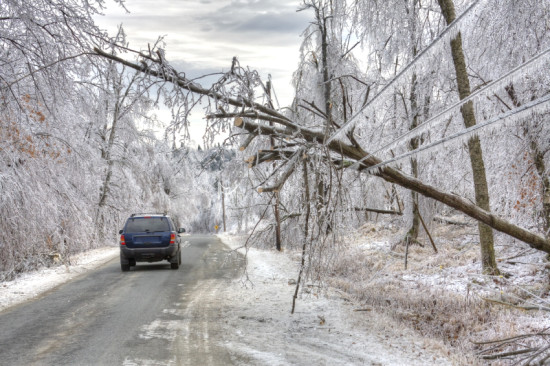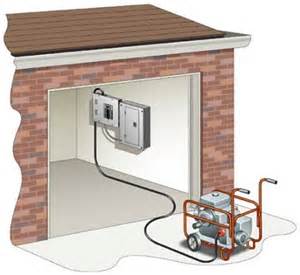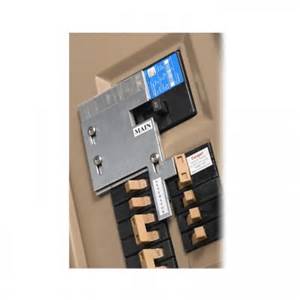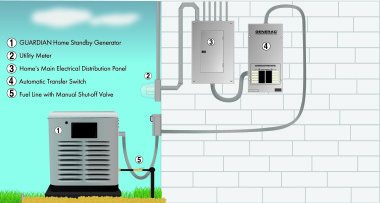In the last three years the northeast has seen several super storms and hurricanes that have had devastating effects on the landscape and left civilians without power from 2 to 10 days and more in some areas. To this day certain parts of the Tri-State area are still trying to recover from the effects of Hurricane Sandy. Have you thought about installing back up power in your home?
WHAT IS A GENERATOR?
A generator is a machine that converts mechanical energy into electrical energy, which can be used to provide your home or business with power in an emergency situation.
There are basically two types of emergency generators; how you choose one depends on your budget and more importantly, your needs during a power outage.
TYPES OF GENERATORS
PORTABLE
Portable Generators are smaller and can be used in remote areas as well as homes (outside only). They are easy to move around since most models come with wheels. Portable Generators come in power sizes from 800 watts to 22,500 watts and typically run on gasoline or diesel fuel and few can even run on a small portable propane tank. A tank of fuel, with constant use, will give you an approximate run time of 8-10 hours at full electrical load rate.
Portable generators are connected temporarily to your electrical system using either a manual transfer switch (see fig. a) or directly to your electrical panel using an “interlock Kit” (see fig b). Please make sure that either connection is installed by a licensed electrician.
Portable generators usually have to be taken out of a storage area or garage and started up using a pull method or with many larger, newer units, an electric starter. Once started, the generator requires a connection to the electrical system, much like plugging in an appliance
AUTOMATIC STANDBY
Automatic standby generators are typically larger units that are housed in their own outdoor weather resistant enclosure. They are fixed outside the home and are permanently connected to your electrical system.
Standby generators generally produce substantial kilowatts and are capable of running for longer periods. They can operate on either natural gas, LP propane fuel or Diesel fuel (commercial units), which means you can run the units for days without the need for refueling.
Standby generators are permanently connected to the electrical system via an automatic transfer switch that will transfer the direction of power from utility service connection to the generator connection automatically with no need for human assistance (see figure c). Standby generators also sense the loss of power and startup automatically so there is no need to go outside to start it up.
Sizes for Automatic standby generators range from 7kw to 60kw for typical residential homes and higher than 100kw for larger homes and businesses.
HOW DO I CHOOSE A GENERATOR?
Choosing a generator sounds difficult and can indeed be a daunting task, however there are a few simple questions you can ask yourself to help you determine the type and size generator you will need. The first question would be, in an emergency event, how much power do I need? And the second question is, what is my budget? Here are a few more questions to help you make the right choice.
- Do I want to stay indoors while the generator starts automatically?
- Do I want peace of mind while I am away or out of the house?
Then you will want to look into an Automatic Standby Generator.
- Do you want to run basic items for a short period of time each day?
- Are you capable of pull starting your generator and refueling it?
Then you will want to look into a Portable Generator.
Budget is also a huge factor in choosing your generator. A standby generator requires professional and licensed installation beginning with the generator unit, and the fuel lines, whether it be natural gas or propane fuel. A typical installation for an Automatic Standby Generator will run between $7,500 to $50,000 dollars, depending on the size and the installation particulars, such as distance from the home.
DO’S AND DON’TS REGARDING GENERATOR OPERATION
- Don’t run a generator in an enclosed area.
- Don’t run a generator inside a home or inside a garage.
- Don’t connect your generator using a back feed method. Not only is dangerous for you, your family and for the utility company workers but it is illegal and can void your house insurance should you cause a fire.
- Do consult with a licensed electrician.
- Do contact your local building department to find out what codes are applicable in your area.
- Do stay inside during a storm and start your portable generator only after the storm has passed.
A-Amp Electric provides supply and installation of all generators. We can provide a turnkey installation, including plumbing for fuel, or just provide the wiring for Portable and Automatic Standby Generators.
Feel free to contact us with any questions or comments on the subject. Our on-site consultation and estimate is completely free and questions can be called in or emailed to our office. You will receive a response. Visit our full website for more information about our company. www.a-amp.net




